| A Wayfarer on the Saint John River Naomi W8328 June 2003 Part 3: Friday to Saturday - Douglas Harbour to Belleisle Bay 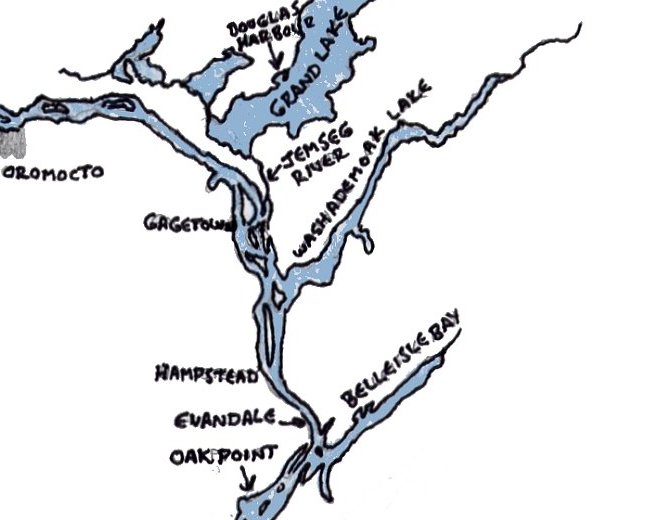 |
| Friday
morning was sunny and warm. I spread my sleeping bag and kit out
to dry and left for a stroll. I was determined to wait for a breeze
before leaving Douglas Harbour. Around 1000, I was enticed to set
sail by a gentle force 2. The sneaky thing disappeared when I was
still in the narrows of Douglas Harbour, so I rowed into Grand Lake and
resigned myself to rowing in low gear towards the mouth of the Jemseg
River. To my pleasant surprise, a steady north-westerly breeze appeared
and I sailed on a starboard tack across the rest of Grand Lake, cutting
across the shallows, and ran about a quarter mile right into the river
before losing the wind again. Quietly I rowed down the Jemseg, admiring the scenery of marshlands and deciduous trees just beyond the tips of my oars. A small clearing on a knoll appeared off the port bow. I decided to go ashore and look at a stone cairn topping this site. During the French period from the1650 to the mid 1700’s, a fort and trading post were located here. This modest fort controlled the transportation routes through Grand Lake and into all the watersheds north of Grand Lake. It was captured in 1674 by Dutch pirates who demanded a ransom of a thousand beaver tails or equivalent for the release of the captured Frenchmen. Later the fort was abandoned when British forces occupied the region. 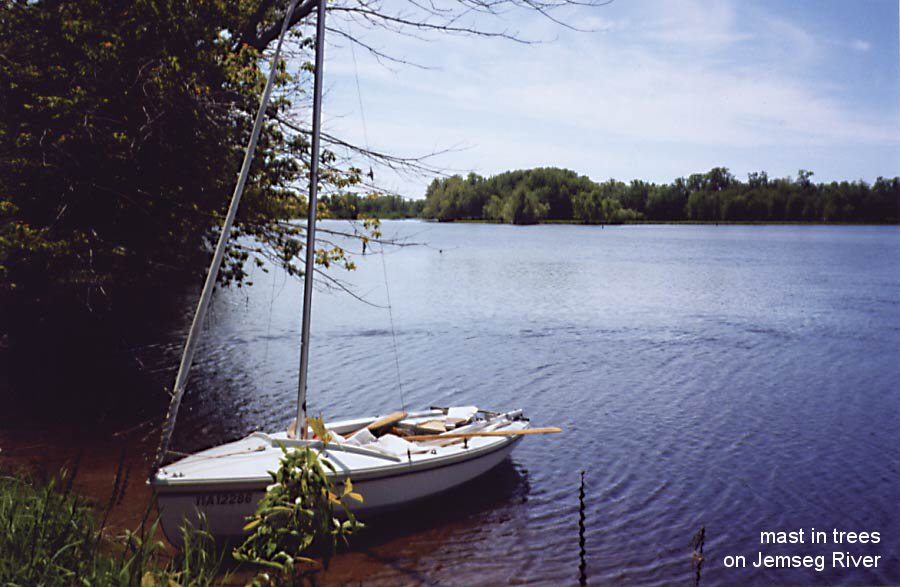 Although I had carefully rowed ashore to avoid the branches of nearby trees, I entirely forgot about this issue when I returned to Naomi. I got some thick branches entangled between the mast and the shrouds and forestay. I have done this on other occasions and now suspect it is inevitable when I cruise on rivers and streams. Trying to remove entrapped tree limbs and branches with an oar and boathook is an unpleasant way to pass some time but it is a good method to stretch all the muscles and tendons of your body which may have seized up in the cramped confines of a small cruising dinghy. By the time I reached the Saint John River the day was windless and the temperature hovered over 30ºC. I was becoming baked and decided to head for a favourite shady retreat of mine by the ruins of a stone house in Mont Creek on Gagetown Island. A breeze suddenly appeared as I rowed around the tip of Gagetown Island so I abandoned my plans for Mont Creek. I raised the main and jib and headed down river instead. 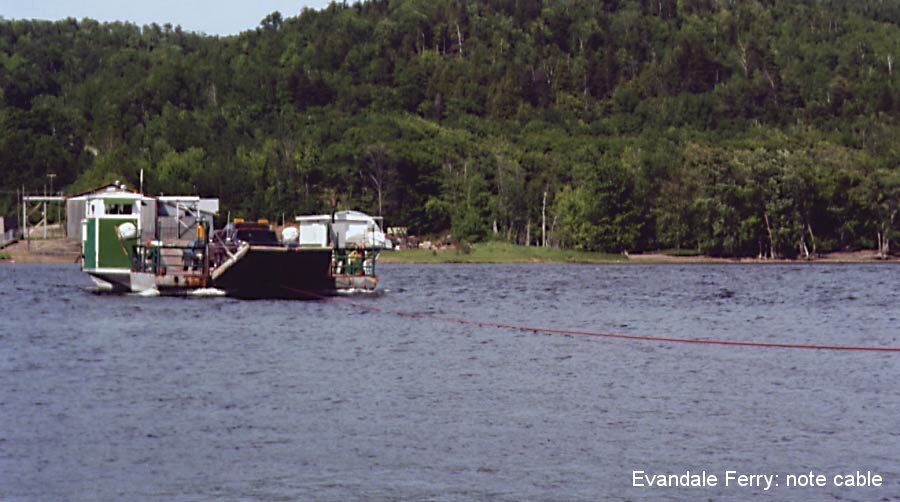 The Lower Gagetown ferry crosses just below Gagetown Island. River ferries haul themselves on cables which rise well ahead of the ferry and take their time lowering astern of the ferry. As I crossed the ferry track the ferry was just leaving the shore. At this inopportune moment my chart case blew overboard and I had to do a quick gybe and sail back for the chart and recover it before gybing again and sailing down river. The skipper of the ferry must have wondered why I was doing these silly maneuvers in front of his vessel. Soon the breeze died again and the heat was oppressive. I rowed Naomi ashore on a beach near the entrance to Washamoeduk Bay and headed for the shade of trees lining the shore. As the sun dropped, I strolled across cattle pastures and along the grassy river bank. Later I contemplated the names, expressions, and carvings on headstones I found in an old cemetery in a wooded copse. When evening came I anchored Naomi with her bow into the stream and her stern line tied to a tree-trunk ashore. A brilliant sunset ended another day of dinghy cruising. 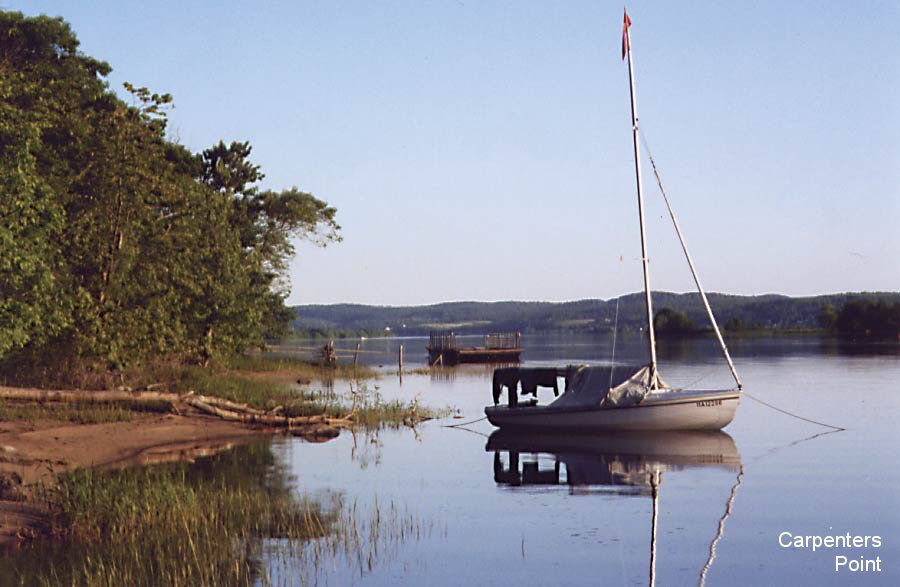 On Saturday morning, I rowed from my anchorage at Carpenters Point. Already the temperature was hot. I thought about how many warm sea-going clothes I had tucked away onboard that I didn’t need. Most of the time I wore light pants and shirt—enough to keep the mosquitoes at bay but stay cool. For a couple of hours I frittered away the time raising and lowering sails as breezes appeared and disappeared. I could have made better progress rowing only and even more progress if I had a little 2hp Honda doing the work. 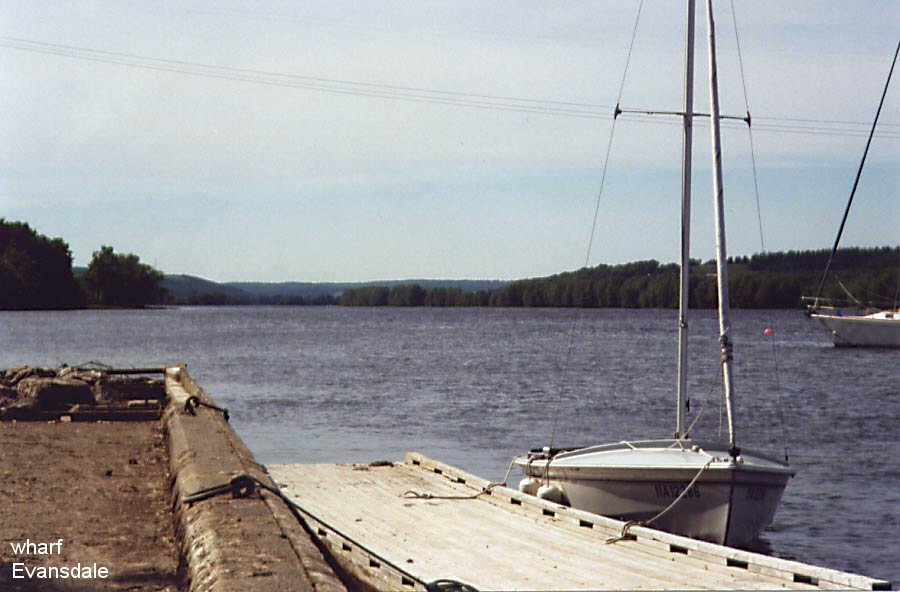 By
the time I reached Spoon Island, a gusty southwesterly wind arrived.
Over the hills and down the river channels it sent strong errant gusts
that heeled Naomi to the gunnels then left her becalmed.
Once I reached the river proper, the wind steadied. As I
approached the wharf at Evandale, I could see the river was rough
around the corner. I tied Naomi to a floating wharf at
Evandale and planned to walk around the point to see the river
conditions ahead.
For the next 20 miles the river is almost straight and for 15 miles the wind can funnel between the high hill sides of Long Reach. There was too much wind to beat down river now. A man working on the wharf came over and introduced himself. He was Chris, the owner of the newly restored Evandale Inn by the wharf. 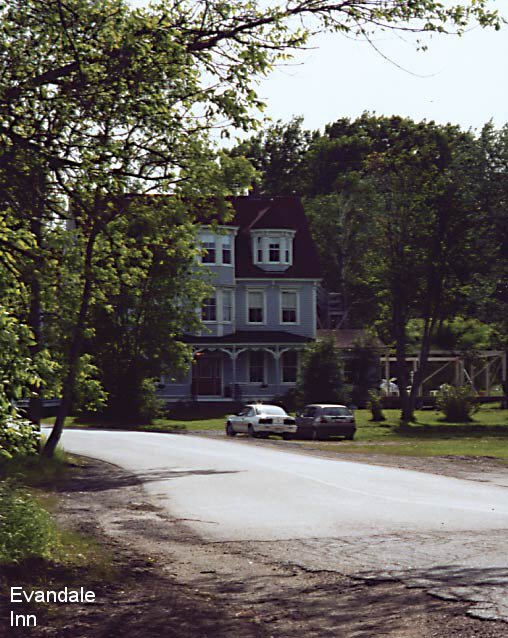 This is one of the old steamer stops from the period when side-wheel and stern-wheel steamers were the main form of transportation on the Saint John River and its tributaries. I remembered the inn as being run-down and couldn’t imagine anyone taking the time and expense to restore it. However, Chris did restore it and he explained to me the difficulties of renovating the inn to the building standards of today. I had lunch at this amazing restored inn while waiting for the wind to abate later in the afternoon. Late in the afternoon I sailed Naomi from the wharf under the mainsail only. The wind was a force 3 and the river still choppy. I had an enjoyable beat down the river and amongst the marshy islands towards Bellisle Bay. Sailing solo without the jib or genny and just the main to look after was simple. Since the river and channel banks were all soft mud and marsh grass, I could sail right into the shallows without fear of damaging the dinghy’s hull or being stranded on a lee shore. I’d run Naomi towards the banks until the centreboard began to stir the muddy bottom, then pivot her around and head out. I ignored the buoys, cut corners, and strived to see just how close I could bring Naomi to the shore. 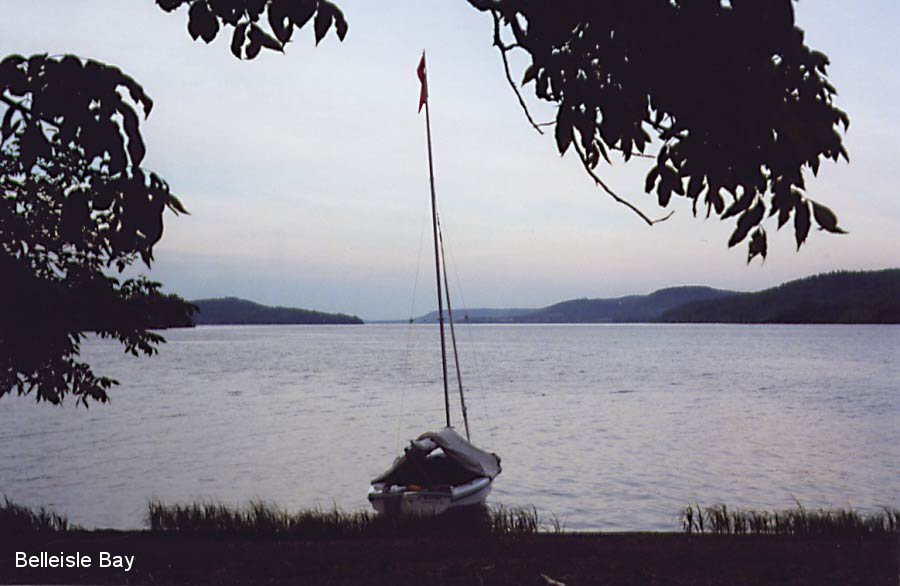 Eventually I reached Bellisle Bay where I found an isolated beach to camp off. The higher hills of this section of the Saint John River Valley remind me of the Bras d’Or Lakes of Nova Scotia. |
|
A Wayfarer on the Saint John River
|